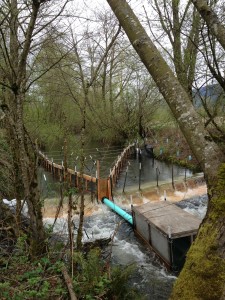By Davis Wahlman, KEPRTV.com
WALLULA, Wash. — KEPR investigating into reports of human remains being found just north of Wallula Junction.
A 14 year old and his father were hunting near the river when the came across a skeleton with a hole in the skull.
“I was about 100 yards in front of him, I just walked right up on it,” said 14 year old Mitchell Jackson.
He didn’t snag any geese on his hunting trip this weekend, but he did make a chilling discovery.
“I just see this white thing on the ground and I go walking closer to it. It looked like skull to me and I waited until my dad caught up to me and I said, ‘Dad, I think I found a human skull,” he said.
And he was right.
A skull, jaw bone, vertebrae, and rib cage just sticking out of the ground near their hunting spot along the river near Wallula. Mitchell’s father called the Walla Walla County Sheriff’s Office who initially thought they could be looking at a homicide. But once the coroner and an archaeologist could took a closer look, they squashed that theory.
The land where they found the remains just north of Wallula Junction is all owned by the Department of Fish and Wildlife. So when they got the call, they knew they had a full plate.
We asked an archaeologist how old he might think the bones are.
“You know, they’re older than ten years old. I can’t tell you if they’re older than 100, 200, years old. They’ve definitely been there for quite a long time.”
Fish and Wildlife archaeologist Dale Earl is tasked with identifying and dating the remains which are now under lock and key at the McNary office in Burbank. He says the body could have been placed where the skeleton was found, or been carried by the river.
They are currently in talks with the Confederated Tribes of the Umatilla Indian Reservation to see if it could be one of their ancestors.
While that could be the story, could we possibly be looking ground breaking find?
Reporter: “What are the odds of this being the next Kennewick Man?” Earl: “Very very remote.”
Fish and Wildlife will team up with an anthropologist to date the bones. Archaeologists say the dating process will take several weeks if not longer.



